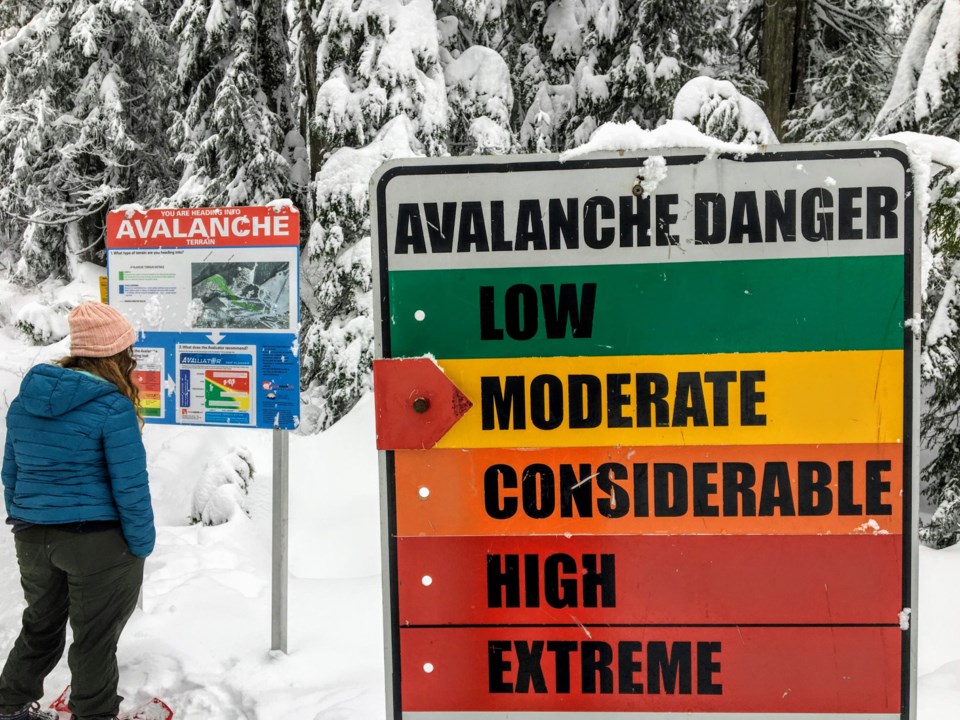As pillows of snow begin to deepen on British Columbia’s mountaintops, Revelstoke based Avalanche Canada is once again preaching the importance of knowledge.
“It’s complicated,” according to veteran avalanche forecaster Mark Bender when asked about the science surrounding avalanche prognosticating. In the business of avalanche forecasting for 25 years, Bender remembers the winter of 2002-2003 when powerful snow slides claimed 29 lives in Canada, including seven high school students from Okotoks, Alberta.
“It was clearly a catalyst to focus a little more specifically on public avalanche forecasting,” says Bender, recalling the avalanche that roared down Mount Cheops in Glacier National Park east of Revelstoke on Saturday, February 1, 2003.
It was a loss of young lives that not only shocked the entire country, but also sparked a national debate over outdoor education safety and was a major impetus behind the avalanche forecasts we have today.
“Without question, that one ranks up there as a watershed moment,” laments Bender.
Faced with the daunting task of predicting the likelihood and magnitude of slides, Avalanche Canada’s forecasting area is the largest in the world, covering 250,000 square kilometers of mountainous terrain across western Canada.
While Bender declines to speculate whether avalanche forecasting has improved with the passage of time and modern technology, he is convinced that communication is better:
“Our messaging is far more targeted…we understand our user groups better and how to get the message to them effectively.”
With a focus of preventing tragedies, the forecasting team at Avalanche Canada boasts several outreach programs aimed at building awareness of avalanche dangers by promoting training, self-reliance, and respect for the mountains and mother nature.
Asked whether he is frustrated by the number of human triggered avalanches, Bender declines to be judgemental. Instead, he stresses that his job is to educate recreationists who wish to enjoy Canada’s winter backcountry. No one should ever venture into avalanche prone areas without being fully prepared with safety gear, including a transceiver, shovel and probe.
“There are a lot of people going out there and aren’t even aware that they are putting themselves in a tricky situation,” says Bender.
Regrettably, while annual avalanche accidents in Canada have declined dramatically thanks to increased awareness and easily accessible forecasts, 12 lives were lost last winter, which is one more than the nation’s 10-year average.
Should the worst happen, and you’re trapped in a major slide, your chances come down to the clock.
“Time is of the essence,” warns Bender, “after being buried for about 10 minutes, your chance of survival is reduced by about 80 percent.”
Bender’s advice to hikers, snowmobilers and skiers is to race to the side as quickly as possible, as some slides roar down a mountain at a speed of 130 kilometres per hour, making escape nearly impossible.
From its headquarters in Revelstoke, Avalanche Canada has become known as a world leader in recreational safety training. Its made-in-Canada curriculum is taught in several other countries, including Australia, Japan, Chile, and Norway. With over 200 licensed providers teaching avalanche awareness courses across Canada, there is little reason for outdoor enthusiasts not to be prepared.
It starts with Avalanche Canada’s golden rule: Get the gear, get the training, get the forecast.
As always, I welcome your comments and criticism on Twitter @kammornanchor and email [email protected].
Bob Price is a veteran B.C. broadcaster who anchored the morning news on CHNL radio in Kamloops for the past 30 years. Bob is also a past Webster Award winner whose previous stops included Vancouver and Calgary.
SWIM ON:
- Last week, Bob Price looked at the challenges and necessary change ahead for BC's tourism industry.
- After an election about nothing, Canada's minority parliament needs to set divisions aside and work on the many somethings Canadians need them to, writes Puneet Sandhar.
- Jody Vance wondered where the adults were to de-escalate tensions at the Lincoln Memorial?



